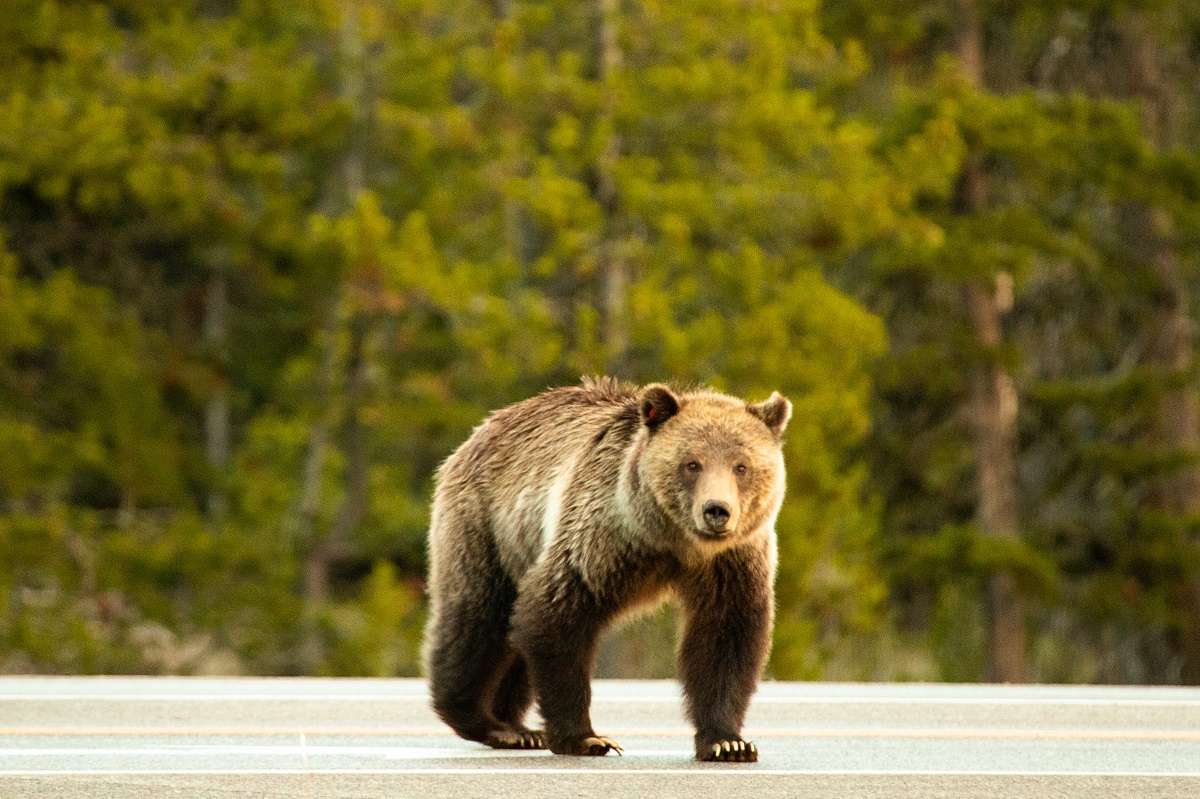Cycling Safely in Bear Country
At first, I thought I was hallucinating. That looks like a bear, I thought as the critter leaped out of the woods into the middle of the bike path, but it’s too big to be a bear.
I was on a lonely stretch of forest trail with darkness settling in and it took a few seconds to grasp that it was indeed a very large black bear. As wide and tall as my fully loaded touring bike, he was barring the way about 100 feet ahead of me.
The bear looked at me as if it, too, couldn’t believe its eyes and then turned and ran straight down the Stower Seven Lakes Trail, just west of Amery, Wisconsin. About a quarter mile down the trail, he crashed through the underbrush into a cornfield.
As I slowly moved on, I took extra precautions, ringing the bell on my bike and yelling, “Hey bear, hey bear! You better watch out, I’ve got a jingle bell here!”
Statistically, you’re more likely to be killed or injured by someone backing up in a parking lot.
An hour later, I rolled into Amery, exultant over my bear encounter and jabbering about it with the locals. It turned out the bruin is something of a local legend, believed to weigh about 400 pounds.
Black Bears and Touring Cyclists
Sightings of American black bears seem to be fairly common among touring cyclists.
Yet, despite their daunting appearance, black bears pose little danger unless they’re surprised at close quarters or are sows protecting their cubs. Black bears are omnivores and 85 percent of their diet relies on vegetation, augmented by a smorgasbord of grubs, ants, honey, nuts, acorns, fish, birdseed, and even yellow jackets.
Occasionally, they can be a hazard to people, especially those who try to flee. Like dogs, bears have a chase response. Considering that a black bear can sprint more than 30 mph, cyclists should remember that you can’t outrun a bear on a bike unless you have a very long head start, an unencumbered racing bike, and the abilities of a time trial champion.
Not as Dangerous as Wasps
Fortunately, bear attacks are rare; statistically, you’re more likely to be killed or injured by someone backing up in a parking lot. Black bears in America kill on the average of one person per year, whereas more than 700 cyclists die annually in vehicular collisions. In terms of wildlife, the most dangerous creatures are bees and wasps. The Centers for Disease Control reports that their stings account for approximately 100 deaths each year in the U.S.
So, perhaps the greater fear is that you won’t have the thrill of seeing a bear while cycling in his habitat.
It’s estimated that there are as many as 465,000 black bears in the lower 48 states, with Maine, Wisconsin, North Carolina, California, Idaho, Minnesota, Pennsylvania, Washington, Oregon, Michigan, Wyoming, and Montana having the largest populations. Alaska is the king of all bear states with at least 200,000.
Grizzlies, However
Obviously, grizzly bears are in an entirely different class than black bears. A male grizzly can stand up to seven feet tall and weigh anywhere from 350 to 800 lbs.
In a story that made national headlines, Brad Treat of West Glacier, MT, was killed after colliding with a male grizzly while riding along a narrow forest trail in the Flathead National Forest. According to news reports, the winding section of trail that Treat was riding had limited sight distance. It was the first fatal grizzly attack in that part of northwestern Montana since 2001.

In the United States, approximately 1,500 grizzly bears are largely confined to remote areas of Montana, Idaho, and Wyoming. The Associated Press reports that there have been six fatal grizzly attacks in the Yellowstone region of these states since 2010.
Cyclists riding remote stretches of these states, such as the Great Divide Mountain Bike Route, usually take the necessary precautions. Many local mountain bikers pack along bear spray when riding the Great Divide trail. Like backpackers, some cyclists also announce their presence on remote trails by yelling and, yes, singing.
Advice from the Experts
What to do when you roll up on a bear? Here’s some advice from the rangers of Denali National Park in Alaska, home to both grizzlies and black bears.
Things You Should Always Do in Grizzly Country
- Carry bear spray and know how to use it!
- Make lots of noise often, to avoid surprising a bear
- Ride/hike with other people when you can
- Never run from a bear
- If you encounter a grizzly bear at close range stay calm
- Never attempt to distract the bear by dropping your pack (or anything else)
If you are traveling extensively in grizzly country, I highly recommend reading more about discerning grizzly bear behavior and learning how to react.
If you are camping in bear country, hang your food and cooking gear 10 feet high in a tree and 100 yards (300 feet) from camp. You’re also advised to cook your food 100 yards from camp and change out of the clothes you cooked in, leaving them at the same distance.
This story has been updated and was originally published on March 2, 2017.

